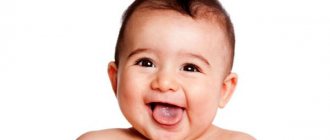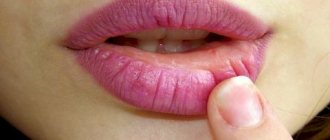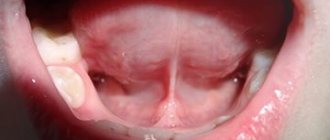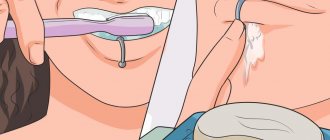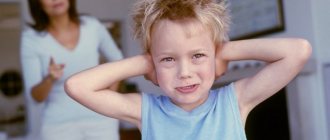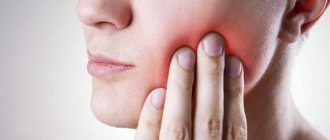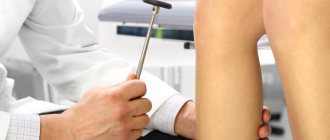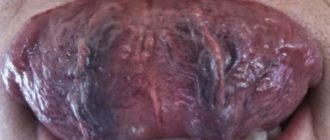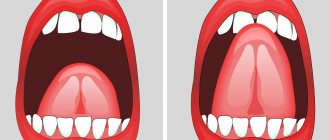A 3-year-old girl died in kindergarten during a walk.
Initially, it was assumed that the baby, due to an oversight by her teachers, froze in a snowdrift. However, a preliminary forensic examination showed that the girl died from cardiac dysfunction, which her parents did not seem to suspect. Unfortunately, childhood illnesses, like those of adults, often develop gradually. What subtle symptoms may indicate dangerous, hidden diseases?
Click to enlarge
The story is told by candidate of medical sciences, pediatrician of the highest category Marina Galitskaya .
What can cause an attack?
Infections that cause fever. The infection can be caused by bacteria, but more often febrile attacks occur with viral diseases (for example, roseola and influenza).
Vaccinations that cause fever. There is a small chance of febrile seizures after vaccination against measles, rubella and mumps, and diphtheria, tetanus and whooping cough. But the risks from incomplete vaccination are higher than the risk from a febrile attack after vaccination.
Heredity. If either parent has had a febrile seizure, the child is more likely to have seizures with fever.
A febrile attack, especially one occurring for the first time in life, is very frightening for parents. In fact, most of these attacks are not dangerous and do not lead to complications or brain damage. A child with simple febrile seizures is only slightly more likely to develop epilepsy than children who have never had a febrile seizure.
Causes of white fever in children
The cause of white fever in a child is a certain disease or other harm to health, but the fever itself in this case acts as a reaction to what happened to the child.
One of the cases is the appearance of an infection in the body of a small patient, and then the body reacts to it in a similar way. White fever in a child quite often becomes a consequence of such a common disease as ARVI. In addition, the prerequisite for it will be various types of trauma, swelling, burns, swelling and hemorrhage.
Also, significant emotional stress of a stressful nature can lead to this manifestation. It is quite capable of leading to white fever in a child and intense pain shock.
In general, we can name the following five key conditions that can cause this condition in a young patient:
- infectious lesion in the acute stage;
- infection with a virus, if the patient has a respiratory illness, then such a symptom may appear on the first day;
- bacterial infection for which incorrect therapy was carried out;
- a disease caused by inflammation, including pneumonia, otitis media, tonsillitis, rhinitis, pharyngitis;
- somatic diseases (both chronic and acute).
How to help a child during an attack?
- Place your baby on his side on a flat surface and make sure he won't fall or hit anything during the cramp (such as crib bars).
- Record the time and tell the doctor when the attack began and how long it lasted.
Attention! Do not try to open the jaw, do not put anything into the child’s mouth during an attack, this can lead to injuries (broken teeth of the child and injured fingers of the person providing assistance). Do not try to restrict the child's movements during seizures, do not restrain him.
The child may be even more afraid of the attack than the parents. Try to calm him down and support him.
If the attack occurs for the first time in life, lasts longer than 5 minutes, the child is unusually sleepy and lethargic before or after the attack, call an ambulance.
In other cases, immediately show the child to the pediatrician. The doctor should examine the child after the attack to make sure there are no signs of a central nervous system infection (meningitis or encephalitis).
Heart disease in children: what parents should be wary of.
1. In 2016, 211 children died during physical education lessons. If you subtract vacations, holidays and weekends from 273 school days, it turns out that every day a child died in one of the Russian schools. From a medical point of view, sudden death in children can be caused by various reasons - both cardiological with the development of acute heart failure, and diseases of the central nervous system. Parents may not even know that their child has such a problem. However, everything can be diagnosed with a timely visit to a pediatric cardiologist.
2. According to the medical examination plan, at 1 year, then at 3 years (before kindergarten) and 6–7 years (before school), children must undergo a medical commission, which includes a cardiologist, who is obliged to refer the child for standard studies - EchoCG and ECG. EchoCG (or ultrasound of the heart) allows you to evaluate the functioning of the heart, its anatomical structure, the contractility of the ventricles, and measure the pressure in the cavities, which is necessary to exclude congenital and acquired anomalies of the heart and lungs. An ECG analyzes the functioning of the conduction system of the heart and identifies its disorders, including life-threatening ones. If a child is suspected of having an arrhythmia, the doctor will refer him for further examination - daily ECG monitoring and consultation with a pediatric arrhythmologist.
3. With some undiagnosed heart defects, tragedy can occur even with average physical exertion. But it’s even more dangerous when under-examined children, trying to earn points before admission, decide to pass the GTO standards, which require absolute health and serious preparedness. Therefore, doctors insist that before passing the GTO standards and competitions, children undergo a full cardiac examination (echocardiography, stress ECG, daily ECG monitoring) to exclude life-threatening disorders in the heart.
4. Often, after suffering from viral diseases, myocarditis (inflammation of the heart muscle) and inflammation of the blood vessels of the heart (aortitis, coronaritis) develop. This leads to a decrease in the contractility of the myocardium, disruption of its blood supply (including the conduction system of the heart), to the development of heart failure and life-threatening arrhythmias. Therefore, after recovering from a viral infection (especially a severe one), the child should be released from physical education for two weeks and must undergo an ECG.
5. The causes of fainting can be associated with both cardiac dysfunction (cardiac arrest, vegetative-vascular dystonia), and with pathology of the central nervous system (tumors, epilepsy), diseases of the endocrine system (hypoglycemia, diabetes mellitus), abnormal development of the spine (Kimmerle anomaly) etc.
6. The cardiovascular system of a rapidly growing child's body is extremely vulnerable. In adolescence, many children develop vegetative-vascular dystonia of the vagotonic type - a condition in which there is a tendency to hypotension. A sharp drop in blood pressure can lead to fainting, in which unsuccessful falls can cause fatal brain damage. Therefore, if a child complains of dizziness, headache, or periodically loses consciousness, be sure to consult a specialist and undergo the necessary examination.
7. Another problem is the special nutrition system that teenagers who are concerned about their figure choose. They eliminate fats from the diet and replace meals with protein shakes. However, the exclusion of one food component provokes the early and rapid development of atherosclerosis of the coronary arteries, leading to myocardial ischemia, the development of acute heart failure and sudden cardiac arrest.
8. There are many children who have had heart surgery at an early age. But they lead a normal life. They participate in sports clubs, as they say, without fanaticism, for their health. But to practice, they, like other children, need to get a certificate from a cardiologist.
9. What parents should be wary of:
- Blue discoloration of the nasolabial triangle and the area around the eyes is a sign of deterioration of venous outflow and insufficient blood oxygen saturation.
- Pain in the heart, shoulder blade, left arm.
- Persistent hypothermia is a low body temperature.
- Shortness of breath, which occurs due to blood stagnation and oxygen starvation.
- Cold palms and feet.
- Fatigue after physical activity - the child sits down, sighs, and complains of palpitations.
- Fainting.
10. It must be remembered that hypertension is rarely asymptomatic. Children complain of headaches, dizziness, weakness, fatigue, blurred vision or spots before their eyes. Children with hypertension often have sharply reduced vision. It is very important not to attribute these complaints to overwork, but to consult a doctor in time. The initial forms of childhood hypertension are corrected without medication. Results can be achieved if you normalize the child’s weight, daily routine (the student needs to get enough sleep, he should not get tired or overexcited) and nutrition. It is very important to choose suitable physical activity. The best results are achieved by cardio training (fast walking - 30-40 minutes daily, swimming, cross-country skiing, cycling).
11. But strength training for children with hypertension is absolutely contraindicated. If these measures do not produce results, medications are prescribed, the doses of which are selected individually and can only be discontinued by a doctor.
12. Most often, increased blood pressure worries children in adolescence (13–16 years). Blood pressure standards in children vary depending on age, weight (overweight children have higher blood pressure), height (short children have lower blood pressure) and gender (boys have higher blood pressure than girls). In children under 14 years of age, the average pressure should not exceed 120/80 mm Hg. Art., for older ones – 135/85 mm Hg. Art. Make an appointment with the cardiologist of the Children's Department, Anna Yuryevna Kozhina, by phone. 43-03-03 and 41-03-03 or
How to treat fever in a child who has previously had febrile seizures?
If the child does not have an increase in temperature during illness or after vaccination, it is not recommended to give antipyretic drugs! This does not reduce the risk of an attack.
If the temperature has risen, medications to reduce it make you feel better overall, but do not help with attacks.
The harm from anticonvulsants for the prevention of febrile seizures outweighs the benefits; they are almost never prescribed.
If a child’s febrile convulsions are prolonged, at the beginning of the attack it is recommended to administer a drug from the benzodiazepine group in the form of an enema, a spray in the nose or a gel on the cheek. Unfortunately, none of these forms are registered in Russia. Therefore, if an attack lasts longer than 5 minutes, an emergency doctor may give an injection of such a medicine.
For antipyretic drugs, children can be given ibuprofen at a dose of 10 mg/kg every 8 hours or paracetamol at a dose of 15 mg/kg every 6 hours. Don't give children aspirin!
What is a fever?
The normal temperature for babies and children is around 36.4°C, but this may vary slightly from child to child.
- Low-grade fever is an increase in temperature from 36.7 to 38 degrees.
- Fever is a high temperature of 38 C or more.
The following symptoms appear when you have a fever:
- Your baby's forehead, back, or stomach feels hotter than usual.
- The surface of the skin becomes sweaty (moist) and sticky.
- The baby's cheeks and sometimes forehead turn red.
To measure temperature, it is best to use a safe digital thermometer without mercury filling.
It is important to know
Parents often mistake normal chills associated with fever for febrile seizures. With such chills, the child's arms and legs may shake rhythmically. This is similar to a seizure, but the child is conscious and reacts if spoken to. So that the doctor can better determine whether what happened was a seizure, and if so, what kind, try to clearly record the duration of the seizure, describe it as specifically as possible, and ideally, record what is happening on video (one person helps the child, the other films it on the phone).
How to measure a child's temperature:
- The child's armpit should be clean and dry! If it is wet, the thermometer will show an inflated result!
- Move your child's arm to the side and place the thermometer in the upper armpit.
- Gently place your hand against your body and keep it pressed while taking the temperature.
- Leave the thermometer in place for as long as indicated in the instructions. Some digital thermometers beep when the temperature measurement is complete.
- Take out the thermometer. The display will show the baby's body temperature.
- If your child has just had a bath or has been wrapped tightly in a blanket, wait 10 minutes before taking their temperature.
- Professional infrared thermometers allow you to instantly measure body temperature. If there is a need to measure the temperature as accurately as possible, but there is no professional thermometer at hand, the most accurate results are obtained by measuring the temperature rectally.
What not to do when the temperature rises
- Do not undress your child or cool him or her with blows or rubs; fever is a natural and healthy response to infection. Hypothermia can lead to complications from the infection.
- Do not cover your baby with a warm blanket or wrap him up, as this may cause heat stroke. Just cover your baby with a sheet or light blanket.
- Do not give aspirin to children under 16 years of age. Absolutely never! This may be due to a rare but dangerous disease called Reye's syndrome.
- In children under one year of age, medications available in the form of rectal suppositories are recommended to reduce fever.
- Do not self-medicate. For young children, the dose of drugs and the frequency of their use should be calculated individually; the prescription can only be made by a doctor after diagnosis.
Diagnostics and its difficulties
It is more difficult to identify the disease in a child than in an adult. The reason is that children, especially the youngest ones, cannot accurately and correctly describe their condition. In this case, the diagnosis is more difficult, the more moderate the symptoms and discomfort experienced by the patient.
The difficulty is also associated with the structural features of the baby’s bronchi. Until the age of five, they have a narrower opening, and the child’s muscles are generally less developed. Because of this, the main manifestations of the disease are the active discharge of thick sputum and swelling of the mucous membrane, and not suffocation or bronchospasm. Based on this, bronchial asthma is often confused with ARVI and other similar diseases, not only by parents, but also by doctors. The disease often progresses for several years before it is correctly diagnosed.
In general, the following main parameters are important for diagnosing
- presence of symptoms (wheezing, shortness of breath, cough, feeling of lack of air and chest congestion);
- reversibility of attacks;
- excessive activity of the bronchi;
- local inflammatory processes.
In young children it is not always possible to objectively assess all these parameters. Therefore, the greatest attention is paid to:
- collecting anamnesis of the child and his family. Take into account predisposition, frequent cold symptoms, the presence of atopic dermatitis, food allergies, allergic rhinitis;
- analysis of symptoms - their presence and intensity;
- physiological examinations (pulmonary function testing - peak flowmetry, determination of their volume, measurement of the level of bronchial resistance, etc.);
- laboratory tests (in the first two years of life, cough and wheezing are common in children without asthma, so confirmation of the presence of specific antibodies to allergens can be a reason for making a diagnosis of “bronchial asthma”);
- trial treatment for 2-3 months - if there is an improvement against it, and without it there is a new deterioration, this allows us to talk about the presence of asthma;
- Chest X-ray - it does not make it possible to diagnose bronchial asthma, but excludes a number of other similar diseases.
Differential diagnosis is also carried out to exclude diseases accompanied by wheezing: congenital anomalies, infections, mechanical factors, for example, the presence of a foreign body in the bronchi.
Bronchial asthma in children: symptoms and treatment
Signs of bronchial asthma in a child
Bronchial asthma is very similar to other respiratory diseases. It is often confused even with the common cold. Therefore, parents need to monitor their child extremely carefully. The first signs of the disease are:
- wheezing (wheezing) - occurs periodically, sometimes during laughter, sleep, crying, can have a different tone;
- dry cough, attacks of which occur more often at night or immediately after waking up, can be allergic in nature - occur when inhaling allergens, and also intensify when crying, laughing, or physical activity;
- difficult, constricted breathing;
- periodic shortness of breath.
What to do if your child has a high temperature
The child must be kept at home and supervised. The temperature should drop within 3 or 4 days.
After vaccination, the temperature can remain normal for up to 48 hours.
What do we have to do:
- if the child is less than 6 months old, call a doctor immediately
- Give your baby plenty of fluids to drink (or continue breastfeeding)
- monitor signs of dehydration
- feed if the baby wants to eat
- Regularly monitor your child's condition at night
- give the child antipyretics prescribed by the doctor
